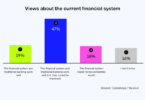Today ESMA published some of the final rules relating to the MiCA crypto asset regulations. These include the information required for licensing crypto-asset service providers (CASPs) and how regulated institutions provide notification that they plan to offer CASP services. As noted below, this could open the floodgates for institutions to engage with crypto.
The finalized rules also cover acquisitions of stakes in a CASP and customer complaint handling. Separately, ESMA published a consultation on a third package of rules covering topics such as detecting market abuse and client rights. Feedback is requested by June 25.
We reported that German regulator BaFin raised concerns about overly detailed regulations. MiCA alone requires 57 separate sets of guidelines or rules.
Bear in mind that while ESMA is responsible for specifying some of the rules, the national regulators implement them. As part of today’s publication ESMA highlighted that it had two options for authorizing CASPs. It could either provide high level guidance or detailed rules. It chose the detailed path because, otherwise, national regulators might have many queries. Additionally, the aim is to attempt to create a level playing field across Europe, and high level rules would encourage more differences between countries.
Why MiCA could open the institutional crypto floodgates
While CASPs have to apply for authorization, the assumption is that incumbent licensed institutions are already considered suitable to provide crypto services. Hence, they must simply notify their national regulator about their plans to offer CASP services. Today’s published rules outline the content of that notification, including their competence in the crypto sphere.
Notification is a far simpler and quicker process compared to authorization. The relevant institutions include banks, central securities depositories (custody), stock exchanges, investment firms and e-money institutions. They must notify their regulator 40 days before they plan to commence the activity and the regulator has just 20 days to respond. Again, the regulators are not approving but confirming whether the notification is sufficiently complete.
Today’s 150-page paper also included feedback from ESMA’s Securities and Markets Stakeholder Group (SMSG), which has representatives from the financial sector, consumers, SMEs and academics. It had two consumer oriented concerns around so-called finfluencers that are prevalent in the crypto sector. SMSG members also warned that MiCA licensing might be used as some kind of badge of quality. They worry this could mean consumers overrate the protection provided by MiCA.






